Ohio’s 1842 Election: Absquatulators vs. Gerrymanderers
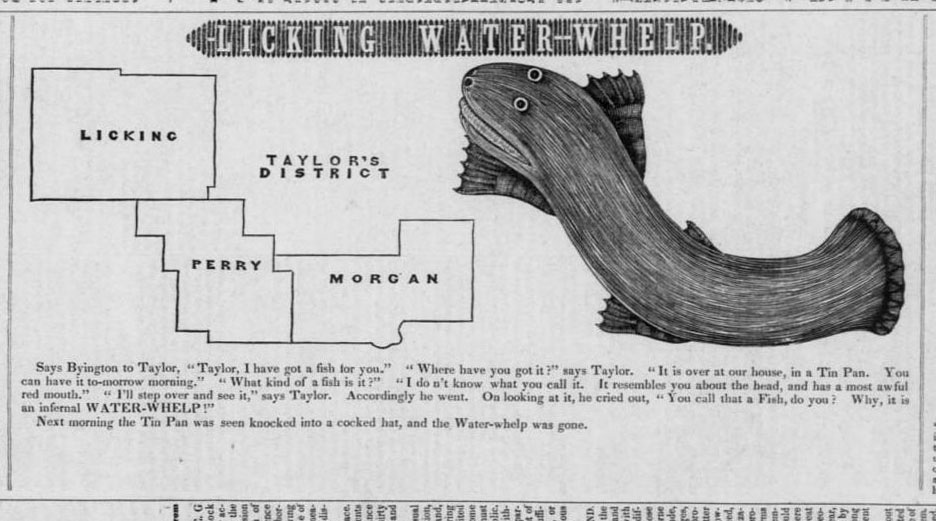
It was 1842, and Ohioans were preparing for another round of elections, including the race for governor. Americans were still recovering from the financial hardships caused by the Panic of 1837, and one of the central issues at stake in this election was bank reform. Whigs and Democrats were fiercely divided on the question: the former favored a more powerful centralized banking system while the latter preferred the establishment of local banks with limited abilities. The Democratic plan was supported by those Ohioans who felt that banks had contributed to their difficult circumstances over the previous five years. During the summer of 1842, however, this issue became less important as Whigs and Democrats found something else to argue about.
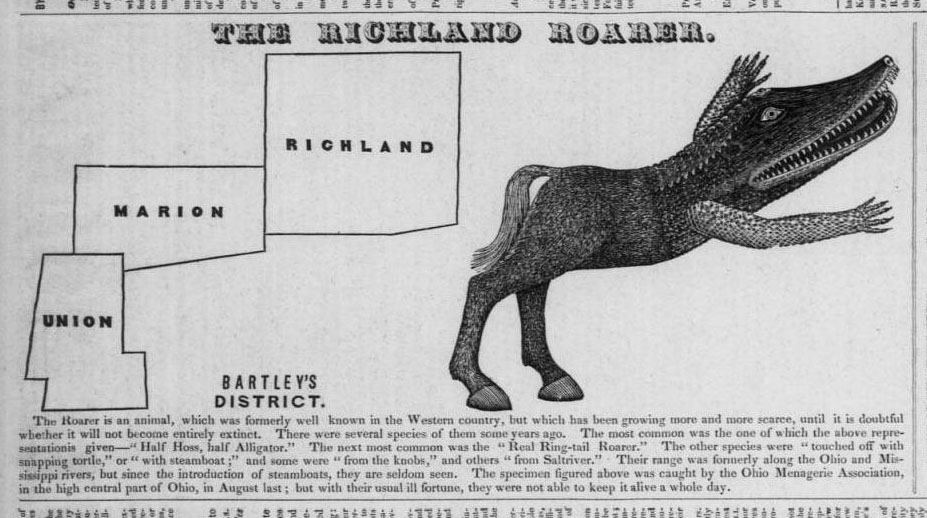
On June 25, the United States Congress passed the Apportionment Act of 1842. Section 2 of the law dictated that, for states with more than one Representative, the Representatives must be elected from districts of contiguous territory and that there will be no more than one Representative per district. In response to this law, the Ohio General Assembly convened a special session to reapportion the state’s districts. Whigs vehemently denounced the bill proposed by the Democrats (also derogatorily referred to as the Locofocos), claiming their plan was an attempt to gerrymander the state in favor of the Democratic Party, leaving only six out of the state’s 21 districts with high Whig majorities.
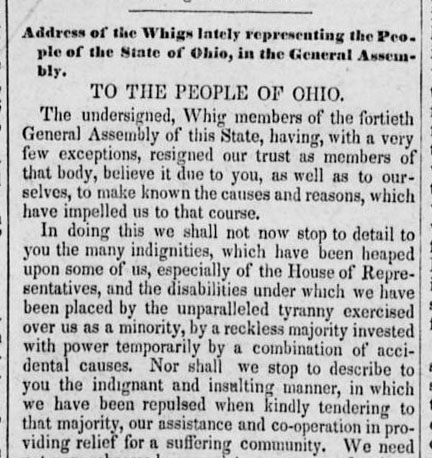
The Columbus Ohio State Journal, the mouthpiece of the Whig Party, stated: “By such a stupendous scheme of iniquity and fraud, it is proposed to disenfranchise the unquestioned and unquestionable majority of the people of Ohio!” (Weekly Ohio State Journal, August 10, 1842, p. 2, col. 1). Since Whigs lacked a majority in both the Ohio State Senate and House, the only way to prevent passage of the bill was for Whig members to resign en masse from both houses, preventing a quorum (the minimum number of members required to pass a law).
In the August 12, 1842, issue of the Daily Ohio State Journal, the Whigs explained their actions to Ohioans, again expressing their disgust with the Democratic Party’s attempt to gerrymander the state (p. 2, col. 2-5). Seen at left is an excerpt from this lengthy letter, which goes on to include an abstract of the unfair apportionment districts proposed by the “Locofoco” bill.
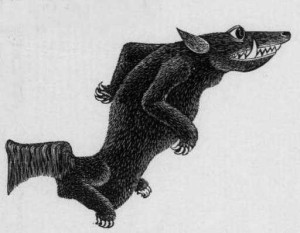
The Democratic Party accused the Whigs of absquatulation, denouncing their actions in the press and turning the emphasis of that year’s election campaigns from banking reform to absquatulation. Over the next several weeks, a collection of “gerrymandering” cartoons appeared in the Ohio State Journal and other Whig newspapers around the state. These whimsical drawings were inspired by the original gerrymandering political cartoon (Boston Gazette, March 26, 1812) and used the outlines of the proposed congressional districts to create “uncommon” animals, such as the Scioto Sea-Horse and the Richland Roarer. According to the captions, Democrats, such as LeGrand Byington, sought to capture these creatures and add them to their menageries, while Whigs wanted them gone.
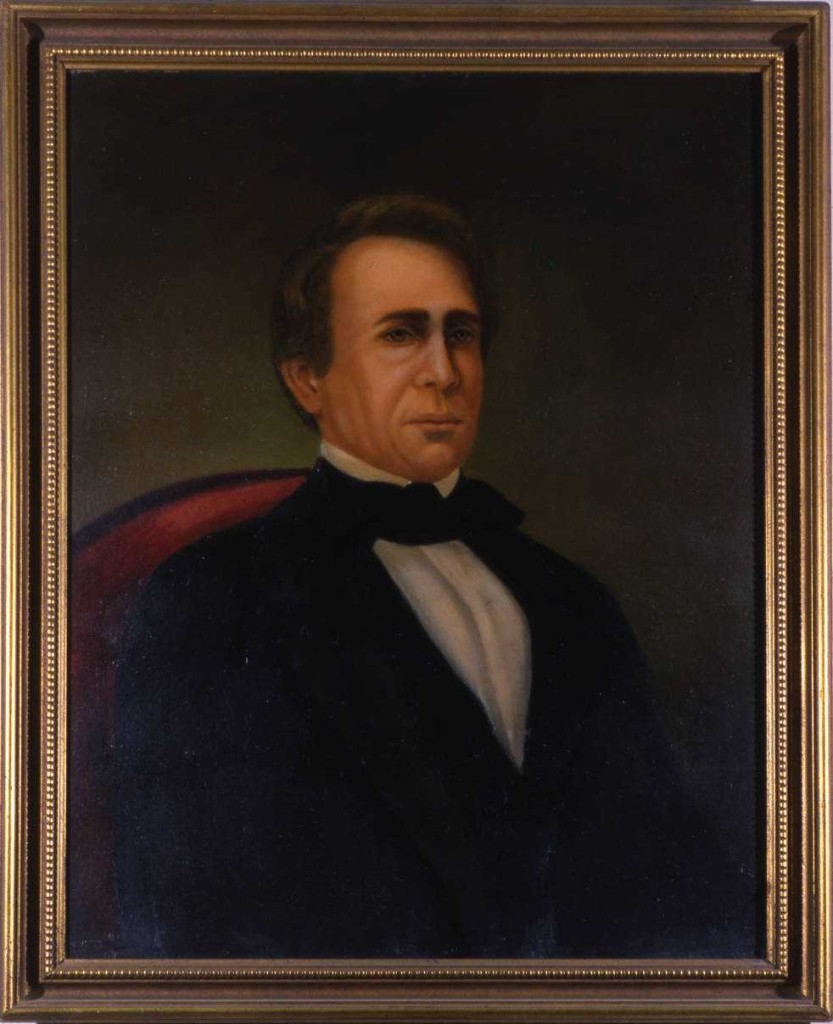
Though they had already prevented the Democratic Party from gerrymandering, it is possible that Whigs used these cartoons to turn attention away from their mass resignations and back to what they considered the Democratic Party’s corrupt actions. It didn’t matter, however: the Democrats were overwhelmingly successful in the 1842 elections, winning the majority in both houses of the Ohio General Assembly. Their gubernatorial candidate, Wilson Shannon, won the office over the Whig incumbent, Thomas Corwin.
The Ohio State Journal is full of news detailing both state and national politics, and now, thanks to a Library Services and Technology Act grant administered by the State Library of Ohio, you can browse and search by keyword this historic newspaper for free on Ohio Memory! Eventually the digital collection will cover 1832 to 1879—check it out to see what information you can find about Ohio politics and much, much more!
_______________________________________
Thanks to Jenni Salamon, Project Coordinator for NDNP-OH, for this week’s post!



Leave a Reply
You must be logged in to post a comment.